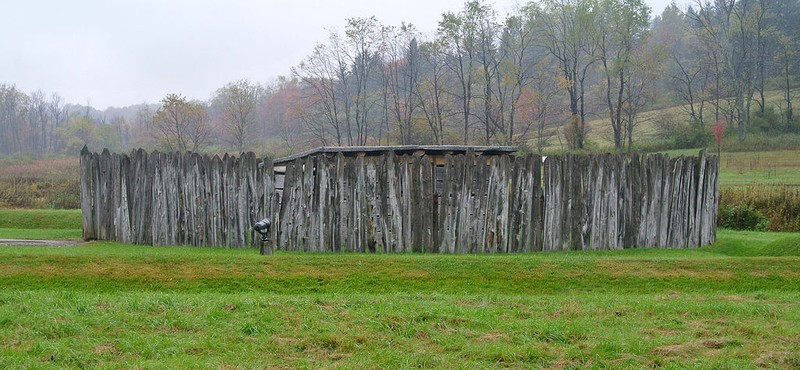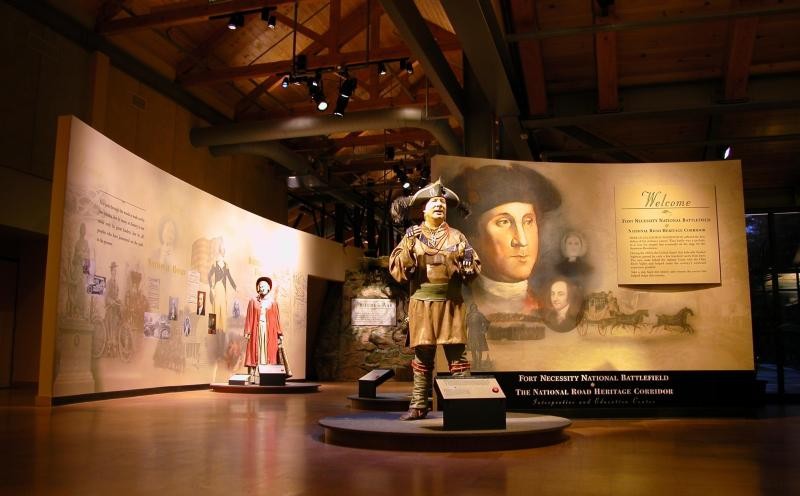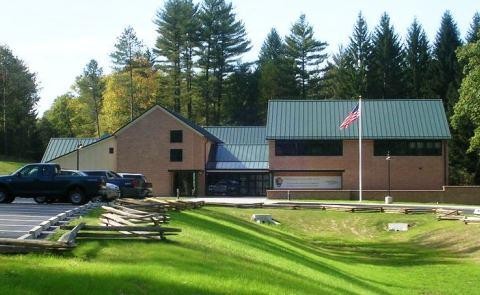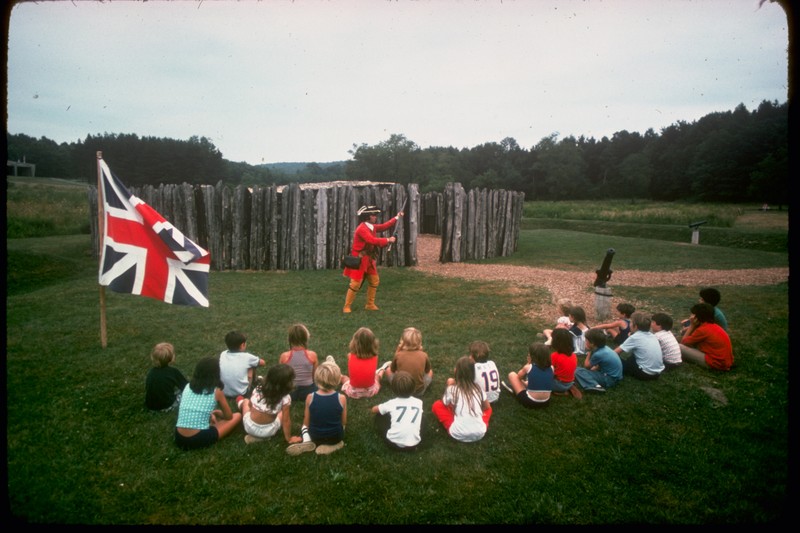Fort Necessity National Battlefield
Introduction
Text-to-speech Audio
Images
Reconstruction of Fort Necessity

Visitor Center Museum

The Interpretive and Education Center

Children learning history.

Backstory and Context
Text-to-speech Audio
The Ohio Valley was an important passage from New France to the ports in Louisiana and was critical to French supplies and commerce. This area was of great importance to the French, Native Americans, and the British Colonists. This led to frequent altercations and contributed to the French and Indian War.
A 21 year old Lt. Col. George Washington led a small force to help defend and fortify the English fort in present day Pittsburgh. Prior to reaching the fort Washington learned that it had already been lost to the French. It was then renamed Fort Duquesne.
While awaiting further orders Lt. Col. Washington learned of a group of French soldiers nearby. On the morning of May 28th, Washington’s men surrounded, and following a small skirmish captured 21 French soldiers. French Ensign Joseph Couldon de Jumonville was killed while in Captivity. Fearing retaliation from the French, Lt. Col. Washington ordered the construction of a stock house and palisade on June 4th, 1754. This was named Fort Necessity.
While at Fort Necessity Washington was promoted to Colonel and received reinforcements and supplies. On July 3rd, 1754 a combined force of 700 French and Indian troops attacked the fort. The battle ended with Washington’s negotiated surrender. Washington and the British forces were allowed to return to Wills Creek. The French burned the fort before returning to Fort Duquesne.
The park was established in 1931 and the fort was reconstructed in 1975 in the Fort Necessity National Battlefield Park. The parks grounds are open year-round during daylight hours. The site includes The Fort Necessity/National Road Interpretive & Education Center.
Sources
Hurst, David. "Fort Necessity: retracing Washington's early steps." The Tribune-Democrat. August 17, 2016. Accessed December 6, 2016. http://www.tribdem.com/news/fort-necessity-retracing-washington-s-early-steps/article_dfed8fde-6418-...
"Fort Necessity -- The Battle of Great Meadows." Exploring Off the Beaten Path. Accessed December 6, 2016. http://exploringoffthebeatenpath.com/Battlefields/FortNecessity/
"The Opening Battle of a World War." National Park Service -- Fort Necessity National Battlefield. Accessed December 16, 2016. https://www.nps.gov/fone/index.htm
Kenny, Kevin. Peaceable Kingdom Lost: The Paxton Boys and the Destruction of William Penn's Holy Experiment. New York, Oxford UP, 2009.
Lengel, Edward G. "Fort Necessity, Pennsylvania." Military History, vol. 27, no. 3, Sept. 2010, p. 76. Biography in Context, link.galegroup.com/apps/doc/A231609508/GPSu=nhais_hti1&sid=GPS&xid=8d1b7900. Accessed 26 May 2019.
Polacek, Karl. "Fort Necessity Ranger Discusses Site's Significance to History." The Daily Courier [Connellsville], 4 Apr. 2015. Opposing Viewpoints in Context, link.galegroup.com/apps/doc/A408163220/GPS?u=nhais_hti1&sid=GPS&xid=6872578d. Accessed 26 May 2019.
George Washington's Account of the Capitulation of Fort Necessity. Edited by W. W. Abbot, Charlottesville, UP of Virginia, 1983. 7 vols. National Archives, founders.archives.gov/documents/Washington/02-01-02-0076-0005#print_view. Accessed 27 May 2019.
